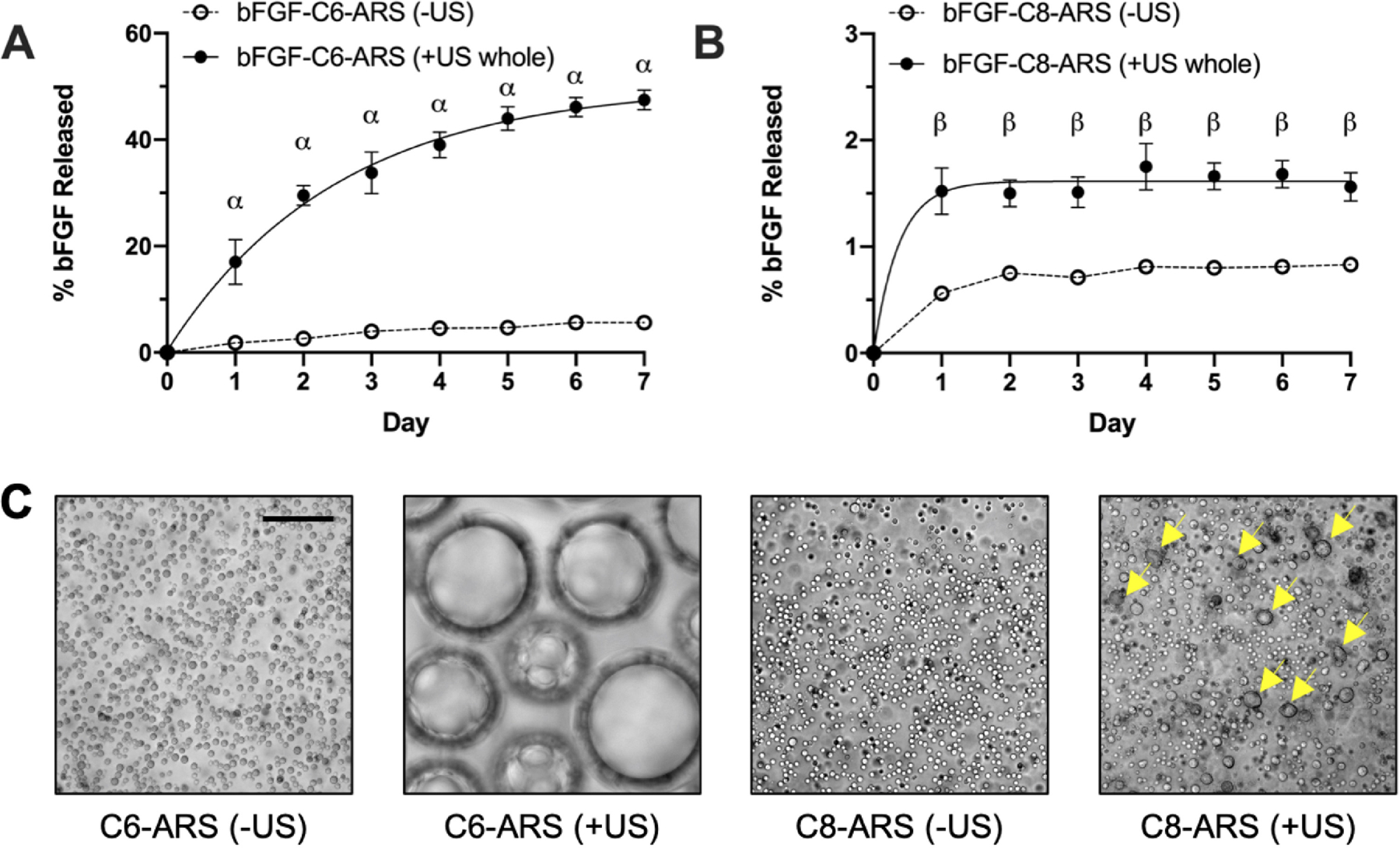Figure 1.

In vitro release of bFGF from the acoustically-responsive scaffolds (ARSs) was dependent on the perfluorocarbon (PFC) species within the phase-shift emulsion. ARSs containing 1% (v/v) bFGF-loaded emulsion, with either (A) perfluorohexane (C6) or (B) perfluorooctane (C8), were polymerized and exposed to 2.5 MHz US on day 0. Data are represented as mean ± standard error of the mean (N=5 per condition). Statistically significant differences are denoted as follows: α: vs. bFGF-C6-ARS (−US) (p < 0.001) and β: vs. bFGF-C8-ARS (−US) (p < 0.01). C) Images of ARSs with either C6 or C8 emulsions show differences following US exposure. The images were taken within 1 hr following exposure. The yellow arrows denote droplets that appear to have coalesced. Scale bar for all images: 50 μm.
